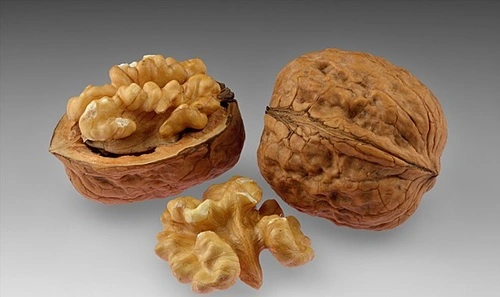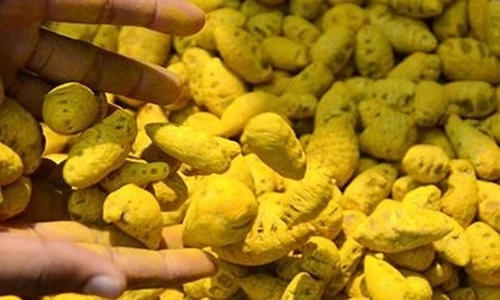Walnut is one of the most significant temperate nut crops cultivated in India. Known for its rich nutritional profile, walnuts are packed with omega-3 fatty acids, proteins, antioxidants, vitamins (E and B6), minerals (magnesium, phosphorus, and zinc), and healthy fats, making them a popular health food worldwide.
India ranks among the leading producers of walnuts, with the majority of cultivation occurring in the temperate regions of the Himalayan belt. The primary walnut-producing states in India are Jammu & Kashmir, Himachal Pradesh, and Uttarakhand, where the cool climate and rich soils provide ideal growing conditions.
To meet both domestic demand and export markets, Indian farmers cultivate improved walnut varieties that offer high yields, excellent nut quality, disease resistance, and adaptability to local climates. This article highlights more than 10 top walnut varieties in India, their characteristics, and regions of cultivation.

1. Chandler
Chandler is one of the most popular and high-yielding walnut varieties grown in India.
- Origin: Developed in the USA
- Nut Size: Large, oval-shaped
- Kernel Color: Light
- Yield: 5–7 kg/tree
- Regions: Jammu & Kashmir, Himachal Pradesh
- Characteristics:
- High productivity with excellent nut quality.
- Thin shells and high kernel recovery (50–60%).
- Suitable for commercial orchards.
- Uses: Raw consumption, baking, and export.
2. Franquette
Franquette is a late-flowering variety widely cultivated in temperate regions to avoid frost damage.
- Origin: France
- Nut Size: Medium to large
- Kernel Color: Light to golden
- Yield: 4–5 kg/tree
- Regions: Himachal Pradesh, Uttarakhand
- Characteristics:
- Resistant to spring frost due to late flowering.
- Good shell strength with high-quality kernels.
- Uses: Snacking, baking, and confectionery.
3. Hartley
Hartley is a premium-quality walnut variety known for its excellent flavor and shell strength.
- Origin: USA
- Nut Size: Large and oval-shaped
- Kernel Color: Light
- Yield: 5–6 kg/tree
- Regions: Jammu & Kashmir, Himachal Pradesh
- Characteristics:
- High kernel recovery and uniform nut size.
- Resistant to common walnut diseases.
- Uses: Gourmet dishes, baking, and export.
4. Payne
Payne is a highly productive variety well-suited for small and medium orchards.
- Origin: USA
- Nut Size: Medium
- Kernel Color: Light brown
- Yield: 5–7 kg/tree
- Regions: Himachal Pradesh, Uttarakhand
- Characteristics:
- Early-maturing and high-yielding.
- Excellent for areas prone to early frost.
- Uses: Snacking and food processing.
5. Opex Caulchry
Opex Caulchry is a commercial variety known for its early yield and nut quality.
- Origin: Hybrid variety
- Nut Size: Large and round
- Kernel Color: Light to golden
- Yield: 6–8 kg/tree
- Regions: Jammu & Kashmir
- Characteristics:
- Early-bearing variety with high kernel recovery.
- Resistant to blight and other diseases.
- Uses: Fresh consumption and commercial markets.
6. Kashmiri Local
Kashmiri Local is a traditional variety widely grown in Jammu & Kashmir for its nutty flavor.
- Origin: Indigenous variety
- Nut Size: Medium to large
- Kernel Color: Light brown
- Yield: 3–5 kg/tree
- Regions: Jammu & Kashmir
- Characteristics:
- Thick shells but high-quality kernels.
- Adapted to local climatic conditions.
- Uses: Local markets, oil extraction, and snacking.
7. Eureka
Eureka is a high-yielding walnut variety well-suited for temperate climates.
- Origin: USA
- Nut Size: Medium
- Kernel Color: Light
- Yield: 5–6 kg/tree
- Regions: Himachal Pradesh, Jammu & Kashmir
- Characteristics:
- Consistent production with good-quality nuts.
- Early flowering and fruiting variety.
- Uses: Confectionery, snacks, and oil production.
8. Serr
Serr is an early-maturing variety that offers high-quality nuts with excellent shelling.
- Origin: USA
- Nut Size: Large
- Kernel Color: Light golden
- Yield: 6–8 kg/tree
- Regions: Jammu & Kashmir, Himachal Pradesh
- Characteristics:
- Early-bearing with uniform nut size.
- High resistance to pests and diseases.
- Uses: Fresh consumption, export, and culinary uses.
9. Tulare
Tulare is known for its high yield and adaptability to Indian temperate zones.
- Origin: USA
- Nut Size: Large and oblong
- Kernel Color: Light to golden
- Yield: 5–7 kg/tree
- Regions: Himachal Pradesh, Uttarakhand
- Characteristics:
- High nut-to-kernel ratio with thin shells.
- Resistant to blight and other diseases.
- Uses: Raw eating, baking, and snacks.
10. Pedro
Pedro is a late-bearing variety ideal for areas with mild winters.
- Origin: USA
- Nut Size: Medium
- Kernel Color: Light brown
- Yield: 4–6 kg/tree
- Regions: Himachal Pradesh, Uttarakhand
- Characteristics:
- Adapted to regions with low chilling hours.
- Produces uniform, high-quality kernels.
- Uses: Snacking, baking, and confectionery.
11. Gobind
Gobind is a local variety grown for its consistent yield and quality nuts.
- Origin: Indigenous variety
- Nut Size: Medium to large
- Kernel Color: Light brown
- Yield: 3–5 kg/tree
- Regions: Himachal Pradesh, Jammu & Kashmir
- Characteristics:
- Suitable for small orchards and traditional farming.
- Highly resistant to cold temperatures.
- Uses: Local markets and household consumption.
In conclusion, Walnut cultivation in India holds immense potential due to the increasing demand for high-quality nuts in domestic and international markets. Varieties like Chandler, Franquette, Serr, and Hartley offer excellent yields, nut quality, and resistance to diseases, making them ideal for farmers in temperate regions. By adopting improved varieties and advanced farming practices, Indian walnut production can contribute significantly to both farmer prosperity and the country’s economy.
FAQs
Q1: Which state in India produces the most walnuts?
A: Jammu & Kashmir is the largest producer of walnuts in India, followed by Himachal Pradesh and Uttarakhand.
Q2: Which walnut variety is best for commercial farming?
A: Chandler, Hartley, and Serr are ideal for commercial farming due to their high yields and nut quality.
Q3: Which walnut variety is resistant to frost?
A: Franquette is a late-flowering variety that is highly resistant to spring frost.
Q4: How long does a walnut tree take to bear fruit?
A: Walnut trees typically take 4–7 years to start bearing fruits, depending on the variety and growing conditions.
Q5: What are the benefits of consuming walnuts?
A: Walnuts are rich in omega-3 fatty acids, antioxidants, vitamins, and minerals that promote brain health, heart health, and reduce inflammation.

